Transitioning to Loose Sow Housing
Posted in: Pork Insight Articles, Prairie Swine Centre, Production, Swine Innovation by student on July 25, 2018 | No Comments
Author: John Van Engelen
Summary:
John Van Engelen describes the phases of his conversion for stall housing to group housing for sows.
Group Sow Housing Across Canada: What Have We Seen
Posted in: Pork Insight Articles, Prairie Swine Centre, Production, Swine Innovation by student on | No Comments
Author: Doug Richards and Dr. Jennifer Brown
Summary:
This project had Doug Richard and Dr. Jennifer Brown traveling across the country to visit and tour barns with producers that had group sow houses or were going to put it in.
The following is a brief tour of what they saw:
New Brunswick: 1200 sow operation, since 2004. Saw the benefits of genetic selection over 12 years, well oiled machines. Benefit of culling for genetics. Has a shower unit.
Quebec: 850 sow operation, solid bedrooms with partitions. Renovation. Has solid floors in the middle.
Quebec: 600 sow. Renovation. Utilized Gestal operation.
Ontario: 1400 sow operation, new build, each pen has 17-18 sows. Has to go off of parity and size, “gilts in their first parity cause a lot of problems”. This was the only competitive feeding system. There are not partitions. Feed in the morning.
Ontario: 650 sow operation. Renovation. Fully slated barn.
Ontario: 1800 sow. Partitions, sows like to have something against their back and their side.
Ontario: 220 sow.
Ontario: 100 sow Organic, 23 pigs per pen. Allows the pigs outside. Farrowing crate is 81 sq feet and only closed for four hours.
Manitoba: 3000 sow operation. Never loss production. Rented another bar. Then once the one side was completed they moved the sows from the one side to the other and started construction on the other half. The sows that were send out to the rented barn where not brought back to the property they were culled.
Manitoba: 650 operation. Put in a training unit. This is one thing that was lacking in most of the systems.
Saskatchewan: 600 sow operation. The gilt barn is totally slatted, sow barn has some solids.
Alberta: 275 sow, conversion. Have to work with the manufacturer to see what you can do.
Takes different staff training to work with these animals as they do not respond the same way that stall housed sows do.
Adopting New Technology in Group Sow Housing
Posted in: Pork Insight Articles, Prairie Swine Centre, Production, Swine Innovation by student on | No Comments
Author: John Van Engelen – Hog-Tied Farms Ltd.
Summary: Sow Shower that clean up the sows before putting them into the nice clean farrowing crates. They sows are disinfected and come out with a nice lemon scent.
Mr. Van Engelen has installed Air crates for some of his farrowing crates. There are three “fingers” above the sow, when they sow hits the “fingers” it triggers the crate to rise up about 9 inches. This technology decreases the amount of piglets laid on, it saves approximately 75% of laid on. Of the four crates that he has installed in five years he has had only eight pigs laid on. Although they are advantageous through decreasing laid on piglets, each crate is approximately $1000 extra to install.
Wifi through the barn had to be installed for the farrowing feed system. The wifi aids in keeping people informed, people are capable of seeing how far along the sow is, how much she is eating, have the ability to change her BCS in the system and the diet that she is receiving.
Experimenting with nursery feeders at the moment as he is expanding next year. The two feeders he is experimenting with are a manual and automatic wet/dry feeder. He is finding that they automatic works better, however it does cost the producer $1200 extra to install.
3 way sorters with RFID Technology, pigs are assorted three different ways with the light pigs, medium pigs and heavy pigs all being separated.
Pig Performance Tester, installed in 2013. Records feed intake and weight.
Sow Nutrition in Group Housing Systems
Posted in: Pork Insight Articles, Prairie Swine Centre, Production, Swine Innovation by student on | No Comments
Speaker: Dr. Hyatt Frobose
Summary:
Increase in protein deposition over the course of gestation, later in gestation have an increased protein due to increase in mammary development. Three main components to energy are: maintenance, target maternal BW gain, and fetal development. Have to adjust basal requirement due to a variety of factors including: environmental temperature, housing system, health status and sow size (different parities).
There are broad categories of feeding systems, competitive and non competitive feeding systems. Aggression can have consequences such as an increased mortality rate, removals (due to lame or aborts), have to assume that all the sows are eating, and due to variation in body condition score potentially need to overfeed the group.
Over conditioned sows are costly because they are wasting feed and they have decreased productivity in the subsequent lactation. Common causes of over conditioned sows are overfeeding an entire pen to improve BCS of thin sows, not calibrating ESF, and improper staff training with regards to BCS.
Try to identify “non-eaters” quickly and move them to a relief pen.
Increasing inclusion of fibre helps to increase satiety and decrease aggression. However, variability in nutrients is significant in high fibre diets. There is also a greater risk of mycotoxin contamination in feeding high fibre diets.
Bump Feeding: traditionally, showed that sows had higher birth weights. However, most of the recent data shows that there is a limited to no benefit from pump feeding.
Parity Specific Diets – most diets are formulated to meet the requirements of gilts as they have higher amino acid and calcium requirements than older sows. Opportunity exists to save on the older sows as we can feed a diet that is more sync with their requirements, rather than overfeeding amino acids.
Prairie Swine Group Housing Jennifer Brown
Posted in: Pork Insight Articles, Prairie Swine Centre, Production, Swine Innovation by student on July 20, 2018 | No Comments
Speaker: Jennifer Brown, Research Scientist – Ethology
Summary:
Ethology is the field of animal behavior, Dr. Brown’s work tries to understand what motivates a sow, and pigs in general, to do what they do and how to translate this into management practices.
Social Interaction and Aggression in Sows
Previously animal management has occurred in stalls, new management practices will require more husbandry skills. It is evident that there are two main issues that aggression occurs in sows:
- Mixing aggression: first 24-48 hours. Fighting occurs to establish their social status.
- Ongoing aggression: occurs after social order has been established
Management that can help reduce aggression in sows revolves around familiarity, previous experience, genetics, pen design, feeding, odour, group size/composition, and time of day.
There are four main feeding systems:
- Floor feeding
- Shoulder stalls
- ESF
- Free-Access Stalls
The style of feeding system will strongly influence the group size. Feeding systems that are competitive work better with a smaller group size, whereas a noncompetitive feeding system allows are larger group size.
Space Allowance:
Space costs money, therefor it is important to determine what the break point is where the sows are experiencing adverse effects. The Code of Practice outlines recommendations regarding minimum space allowance for both gilts and sows. Smaller groups require larger allowances than larger groups as there is not as much shared space.
Pen design is critical and it is important to consider space allowance, feeders and drinkers (location and ratio), layout and separation of dunging, feeding and resting areas.
Building New or Renovation: What to Consider
Posted in: Pork Insight Articles, Prairie Swine Centre, Swine Innovation by student on | No Comments
Author: Murray Elliot
Summary:
Swine Innovation Porc and Prairie Swine Center collaborated to hold meetings in both Manitoba and Alberta to aid hog producers on what to consider when making expansion plans.
“The focus is really to help people have a look at their current facilities. It can incorporate plans of what they hope to do in the future and to put those two together to make a facility that meets the new code of practices and meets current production today” – Murray Elliot
Pork producers are asking themselves whether they should be building new or renovate due to the 2024 codes of practice that they will need to implement. Although building from scratch is advantageous allowing hog farmers to develop exactly what they want the cost is generally much greater.
When completely rebuilding producers must adhere to the new codes and all of the minimum distances, however when renovating often the producer is grandfathered in. If the facility is in good shape it can generally be renovated at half the cost of completely rebuilding. However, with the new codes most herds do not fit into the old buildings, so most renovations turn into a renovation and an addition.
https://www.youtube.com/watch?time_continue=226&v=hvLeU8tuU6g
Improved Laying Areas for Sows
Posted in: Pork Insight Articles, Prairie Swine Centre, Swine Innovation by Ken Engele on March 23, 2018 | No Comments
Improving the Laying Area for Gestating Sows
This video clip contains testimonials from hog producers who participated in a project focused on strategies to improve laying areas for gestating sows housed in groups. As part of this project, devices to fill the gaps between slats were installed in the sow pens (Photos 1 and 2).
Three farms across Canada participated in this project and we would like to thank these producers:
Mr. Geert Geene, Amberley Bacon Company
Mr. Francis Veilleux, Ferme porcine L.V.
Mr. Ken Waldner, Matador Colony
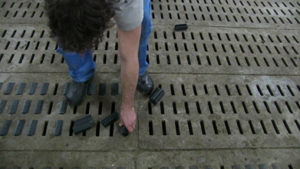
Photo 1: Mr. Geert Geene, Amberley Bacon Company, installing « slat gap covers » to fill the spaces between the slats

Photo 2: Sows sleeping on the section with « slat gap covers »
For more information:
Optimizing flooring and social management of group housed gestating sows
Acknowledgments:
This project was funded by Swine Innovation Porc within the Swine Cluster 2: Driving Results Through Innovation research program. Funding was provided by Agriculture and Agri‐Food Canada through the AgriInnovation Program, provincial producer organizations and industry partners.


Environmental Enrichment Strategies for Sows
Posted in: Pork Insight Articles, Prairie Swine Centre, Swine Innovation by Ken Engele on March 22, 2018 | No Comments
ENVIRONMENTAL ENRICHMENT STRATEGIES FOR GROUP-HOUSED SOWS
Summary: This video clip contains testimonials from pig producers who participated in a project to enrich the living space of gestating sows housed in groups. Six farms across Canada participated in this project and three different enrichment items were installed in the sow pens (Photos 1 to 6):
- A chain suspended from the ceiling, the end of which is approximately 10 cm (4 in.) above the floor (Photos 2 and 3);
- A piece of wood suspended by a chain, set at a height of 81 to 91 cm (32-36 in.) above the floor (Photos 4 and 5). The height corresponds to the average height of a trough, about the height of a sow’s nose;
- A Porcichew toy (ring of aromatic plastic), suspended by a chain, fixed at a height of 81 to 91 cm (32-36 inches) above the floor (Photo 2). The height corresponds to the average height of a drinking trough, about the height of a sow’s nose (photo 6).
We would like to thank the following Canadian hog producers who participated in this project:
Mr. John Van Engelen, Hog Tied Farms
Mr. Geert Geene, Amberley Bacon Company
Mr. Tom Kennelly, Sunhaven Farms
Ms. Christine Marcotte, Ferme Sainte-Catherine
Mr. Francis Veilleux, Ferme porcine L.V.
Mr. Ken Waldner, Matador Colony

Photo 1: The three enrichment items installed in the same pen at the Amberley Bacon Company farm (chain, Porcichew and piece of wood).

Photo 2: Chain anchored in the ceiling
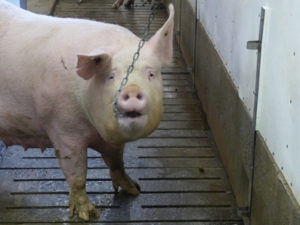
Photo 3: Sow playing with the chain

Photo 4: Installation of the piece of wood, fixed on a chain
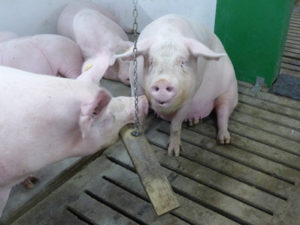
Photo 5: Sows playing with the piece of wood

Photo 6: Porcichew
For more information:
Optimizing flooring and social management of group housed gestating sows
http://www.swineinnovationporc.ca/resources/Annual_Reports/2016-2017/WELFARE%201231%20Flooring%20and%20social%20mangement%20of%20sows%202017.pdf
Enriching the living space of pigs to comply with the Code
Acknowledgments:
This project was funded by Swine Innovation Porc within the Swine Cluster 2: Driving Results Through Innovation research program. Funding was provided by Agriculture and Agri‐Food Canada through the AgriInnovation Program, provincial producer organizations and industry partners.


Swine Health Management and Biosecurity
Posted in: Prairie Swine Centre, Swine Innovation by admin on February 7, 2018 | No Comments
ACTIVITY 4. Swine Health Management an Biosecurity – Rapid Assessment of Transport Trailer Cleanliness
Objective: Demonstrate the use of ATP bioluminescence meter for rapid assessment of surface cleanliness of swine transport trailers.
 |
Auditing On-Farm Best Management Practices
Posted in: Pork Insight Articles, Prairie Swine Centre, Swine Innovation by admin on | No Comments
ACTIVITY 3. Auditing On-Farm Best Management Practices
Objective: Measure the pork industry’s adoption of best management practices that reduce cost of production,
enhance sustainability and reduce labour commitments.
 |
 |
 |
 |
 |
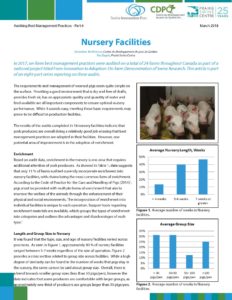 |
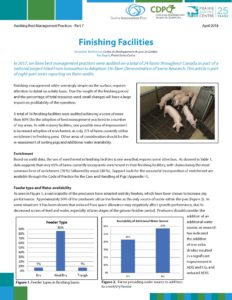 |
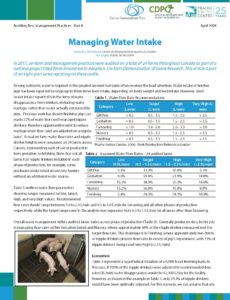 |
| Farrowing | Nursery | Finishing | Water Management |









